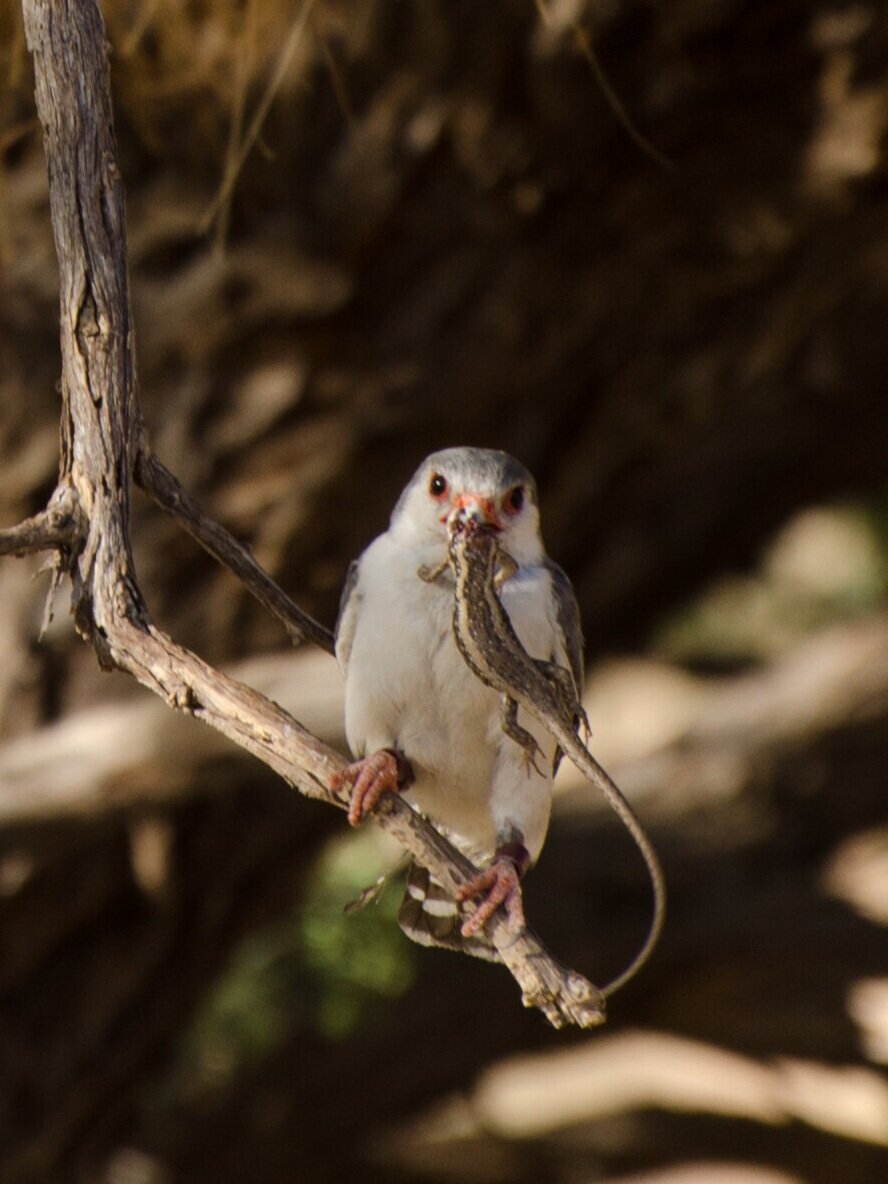

Skinks Avoid Danger by Eavesdropping on Bird Alarm Calls
The Kalahari tree skink gains a lot from associating with sociable weavers. These small birds build big communal nests that offer skinks increased opportunities for basking and foraging. However, weaver nests also house a major predator of skinks, the pygmy falcon. How do Kalahari tree skinks manage living next door to their predators? The answer appears to be by eavesdropping on their neighbors.
Read the whole story at my Animal Minds blog: Skinks Avoid Danger by Eavesdropping on Bird Alarm Calls.

Cow Talk
According to new research, cows talk to one another, expressing their emotions, both positive and negative, through individualized voices. The researchers say the findings have implications for farmers and animal welfare.
Read more at my Animal Minds blog: How Cows Express Emotions.

Birds Hiss Like Snakes to Protect Nests
Certain cavity-nesting birds emit a surprising hiss-like vocalization to deter predators and repel competitors from trying to occupy the same nesting cavity. It’s been hypothesized that that this hiss mimics a snake hiss – but is it a case of mimicry or evidence of widespread fear of hisses?
Read my latest Animal Minds post: Birds Hiss Like Snakes to Protect Nests.

Why are Some Wild Cats Black?
Black coloring is common in cats, from domestic kitties to leopards and jaguars. The persistence of this genetic trait in wild populations suggests it confers some advantage. But new research indicates it’s more of an evolutionary balancing act.
The occurrence of black coloring, also known as melanism, arises from a genetic mutation that regulates the production of the pigment melanin. These melanistic cats are the same species as their lighter-coated counterparts; it’s similar to the difference between brunettes and blondes.
Melanism has been documented in 14 out of the 40 wild species of cats. Scientists have suggested that melanism could be associated with factors such as camouflage, thermoregulation, and habitat use. Now, new research points to another factor: visual communication with other cats.
Read my latest Nat Geo news story: Is Being a Black Panther Beneficial? It Depends.

Eavesdropping Squirrels
Eastern gray squirrels listen in to birds’ conversations for cues about nearby predator risk, according to a new study from Oberlin College. Researchers found that hearing casual bird chatter after a predator call signals safety to squirrels.
Read more on my Animal Minds blog: Squirrels Eavesdrop on Bird Chatter as Sign of Safety.
